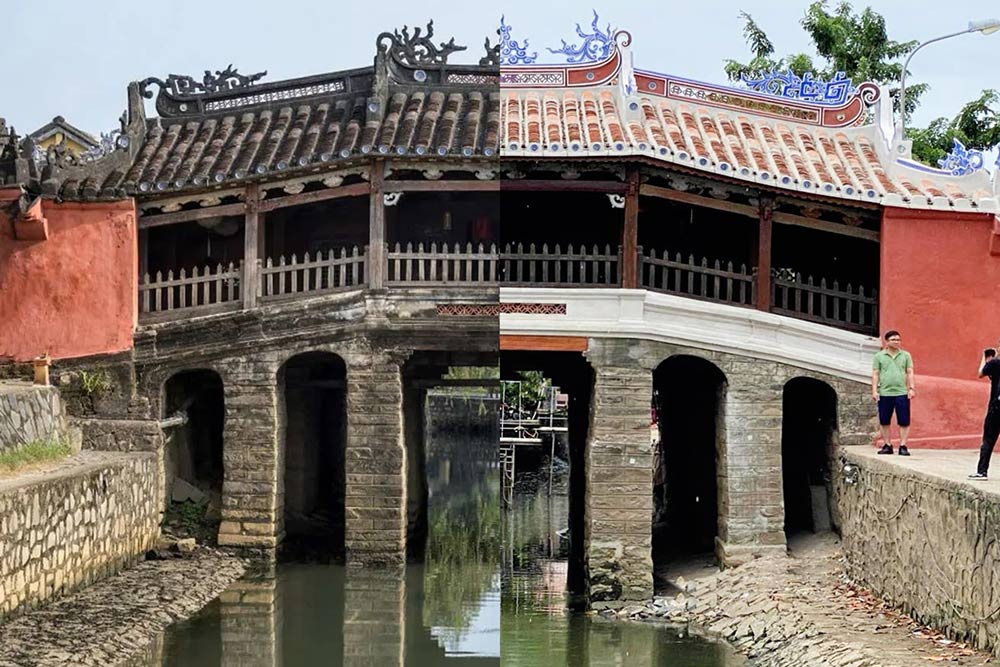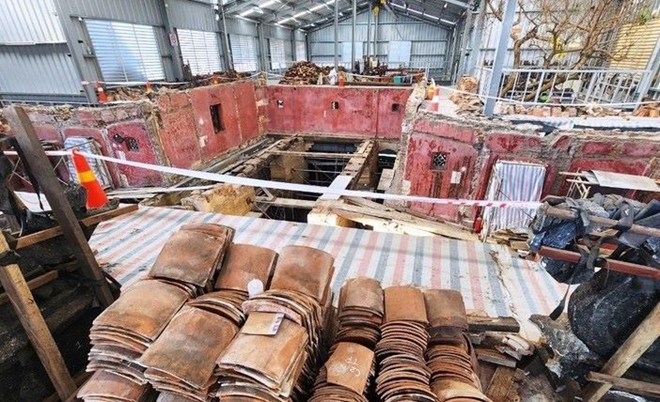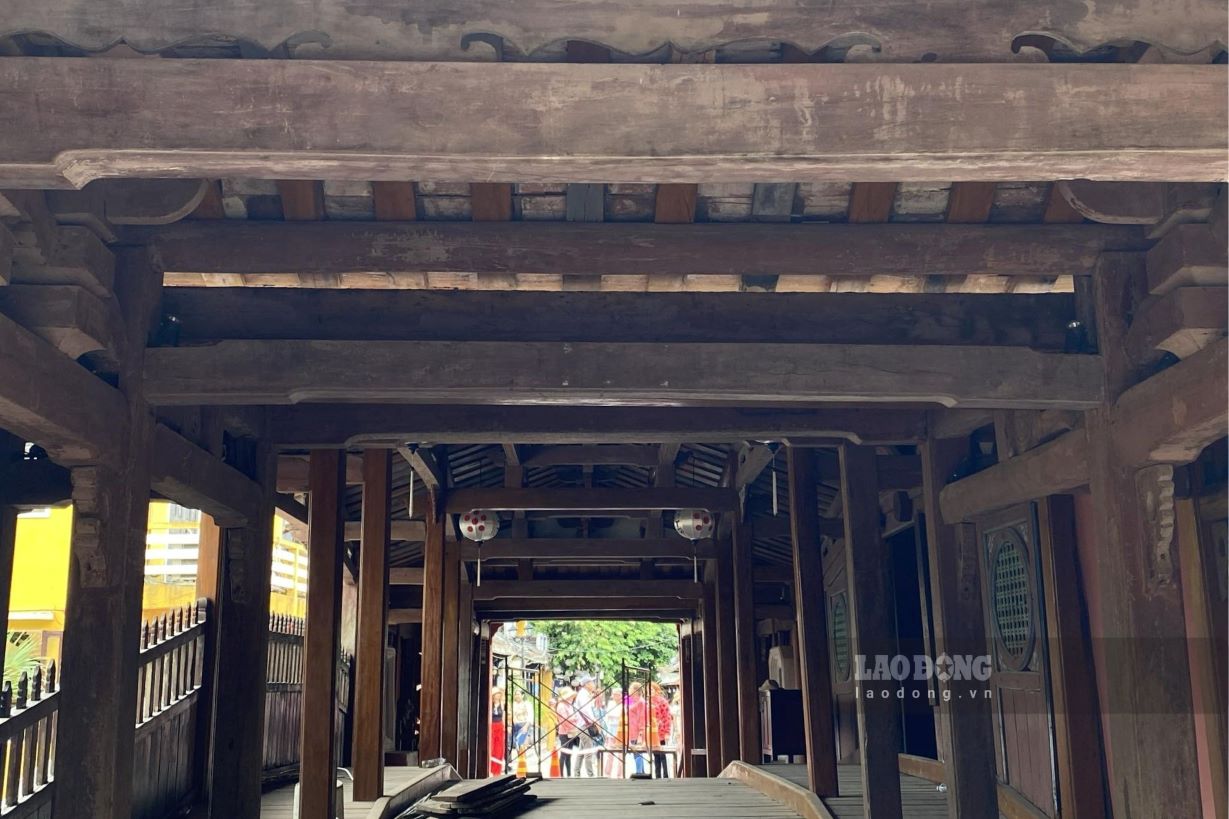
Sir, how do you evaluate the controversy surrounding the plan to "lowly restore" Cau Pagoda?
Hoi An Covered Bridge was built in the 17th century, more than 400 years ago, and is very damaged.
Restoring and repairing to keep the heritage alive and not collapsing is something that needs to be done, and in fact, Hoi An chose the "low-level restoration " option which is completely correct and appropriate.
In fact, Hoi An has retained for Cau Pagoda all usable components and details and only replaced damaged and rotten parts. I personally appreciate this technical solution.
In essence, the building is still the same, preserving its architectural and structural values, not a completely new construction.

What do you think is the most important thing to note about the appearance of a 400-year-old building that has just been restored?
The project was just completed in July 2024, the mortar joints are still new, the lime paint is still new, the roof tiles and patterns are still new.
Everything needs to undergo weathering over time due to harsh weather such as sun, rain, wind and storms... for the project to have the necessary "moss" and "oldness".
It would be very delusional to require a newly restored project to be as ancient and mossy as a 400-year-old relic.
The time of original construction (17th century) and the time of recent restoration (2024) are more than 400 years apart, the sources of construction materials are completely different. There are materials that 400 years ago cannot now be found to replace 100% of the original.
Therefore, the direction of restoration that is as close to the original as possible is something that Hoi An has done well, and we need to take note.
For example, the details of wooden mortises, connections, trusses, and even the roof layer... were all constructed hundreds of years ago, using completely different techniques.
The technique is different now, but when implementing, experts have to research very carefully to make sure the new details completely match the old structures.
Objectively speaking, we need to evaluate this restoration project in the spirit of the proverb "better wood is better than good paint", that is, looking at the elaborate restoration steps of the structure of the building instead of color.

Having studied in Sweden and Japan, can the architect share more about lessons from two countries with extensive experience in restoring heritage architecture?
In Japan, there are many ancient architectural works, many of which were destroyed to the point of being completely burned down.
To restore an architectural heritage, experts will find all relevant documents, interview people about the details of the project... to create completely new design and construction drawings but still keep the structure. , traditional techniques, historical value.
It is important that when a project is completed, people never question the new paint color, or criticize that an ancient building has too bright colors. On the contrary, they greatly appreciate efforts to restore monuments, especially when core values are preserved based on what the community preserves.
Covered Bridge is not the first structure to cause controversy after restoration. The Opera House, an old French villa at 49 Tran Hung Dao in Hanoi, has become a hotly discussed topic because of the paint color after restoration. So where does the real problem lie?
First, we need to recognize what is the key point of success in the restoration of Hoi An Covered Bridge. The key is to preserve the original architecture and load-bearing structure. The restoration of Cau Pagoda has kept the core values of the project's architectural - cultural - historical heritage.
Perhaps what is missing here is communication work. Although information about the project is completely in accordance with the principle of public transparency, the project still needs to go through the media to provide information to the community more widely.
The public should know about the difficulties encountered by the professional committee, focus on research to find solutions and the implementation process. Information needs to be proactively communicated to a public – not all of whom have expertise, academic qualifications or scientific research experience – who understand the project.
For example, the public needs to know that new paint colors will be mixed to approximate the original color. Or, regarding the newness of the materials, the public needs to know that the project will need a period of time to have enough sun, rain, humidity... and the necessary conditions to have a mossy color. Slowly, the sands of time will bring an ancient, mossy look to the Covered Bridge.
I think we should be happy for Hoi An, for Vietnam to have another truly quality restored heritage building that will endure and exist in the future.











